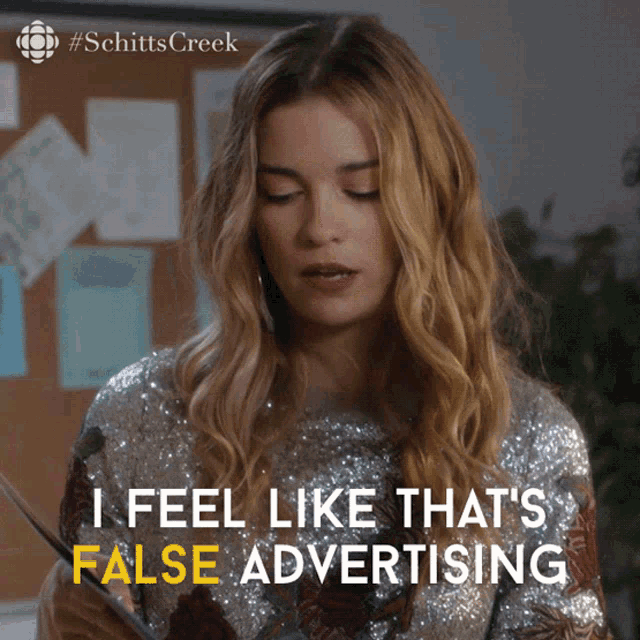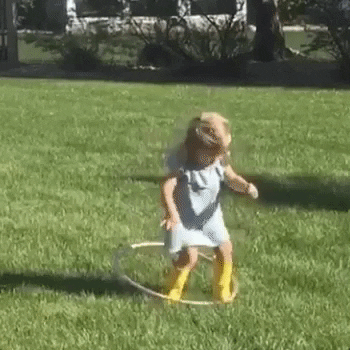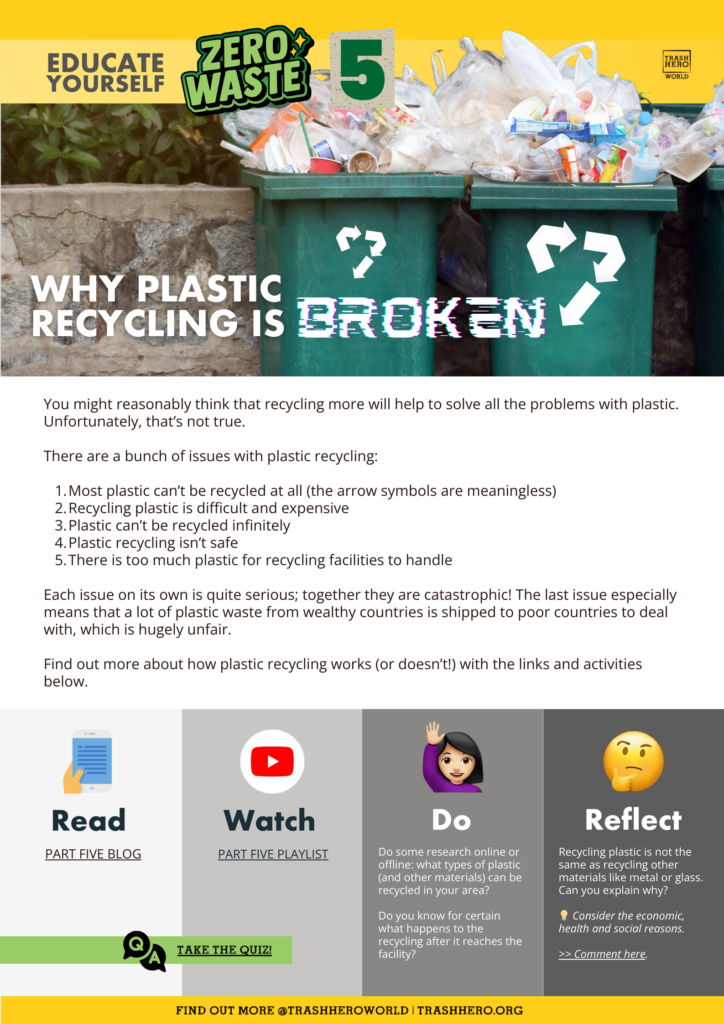Yes, you read that right: unfortunately, recycling more is not going to solve the problem of plastic pollution. Here are the twins with why:
Quite a few different points were mentioned in that conversation. Let’s break them down.
Plastic is difficult and expensive to recycle
Recycling plastic is tough because there are thousands of different types, colours, and additives – just think of the average supermarket shelf! All the different plastics usually get collected together and sorting them out at the factory is expensive and not always effective.
Inaccurate sorting leads to contamination, where a whole batch of plastic might need to be thrown away. It also means any recycled products are lower quality and need new plastic (from fossil fuels) mixed in to make them work.
The sorting and treatments needed to make recycled plastic also make it expensive to sell – it usually costs more than brand new or virgin plastic. This means it is often not cost-effective for companies to switch to using recycled plastic.
Recycling arrows are meaningless
Those little symbols with arrows on plastic packaging might make us feel good, but they’re not a guarantee that the plastic can be or will be recycled.

If the arrows you see have a number inside, this is the symbol to show the general type of plastic it’s made from. There are 6 basic types:
1. PET (Polyethylene Terephthalate)
2. HDPE (High-Density Polyethylene)
3. PVC (Polyvinyl Chloride)
4. LDPE (Low-Density Polyethylene)
5. PP (Polypropylene)
6. PS (Polystyrene)
The seventh type is “Other”, which means “everything else” – thousands of varieties! Only 2 of these types, #1 (PET) and #2 (HDPE) can be effectively recycled, yet all the numbers are shown with arrows around them. How misleading is that?
Plastic recycling is not infinite
Unlike some materials like glass or metal, plastic can only be recycled once or twice before it degrades too much to be useful. So, it’s not a never-ending cycle like we might hope.

Nope, that’s still not going around…
The way plastics behave and the high risk of contamination mean – if it can be recycled at all – it usually gets downcycled. In other words, it gets turned into a different kind of product from its original use. For example, plastic bottles (made from PET) are often downcycled into clothing or carpets. Plastic bags (made from LDPE) can get downcycled into waste bins or garden furniture. These new products can’t be recycled further so they eventually end up in landfill, incinerated or in nature.
Around 2% of plastic is effectively recycled, which means it gets turned into something similar to its original use, so a plastic bottle to a plastic bottle. But this only adds 1 or 2 extra “loops” to its life – after that this plastic too will degrade and get thrown away.
Plastic recycling is not safe
As we know, plastic contains a lot of chemical additives – sometimes half or more of the material weight. Around 16,000 different substances have been identified in plastics but very little is known about any of them, let alone what happens when we mix them up with others in the recycling process.
Scientists are worried because they have found dangerous chemicals such as flame retardants in recycled plastic cooking utensils This is a problem because they are in contact with our food.
Recycling plastic also means grinding, shredding, and heating the materials, which exposes workers to more of these harmful chemicals through skin contact and breathing in fumes and microplastics. In many countries, they don’t get proper protection to keep them safe, nor healthcare to help deal with the impacts.
There’s way too much plastic to recycle
Let’s not forget the original problem with plastic: we’re churning it out at an alarming rate, far faster than we can actually recycle it. And most of the time, we don’t even want to recycle it because recycling is difficult and expensive.
This means a lot of it ends up being shipped to poorer countries to deal with. This is called the waste trade. But why would they want other people’s trash? Well, sometimes they are promised money for it, or sometimes it is (falsely) labelled as useful items.

Either way, when it arrives, the companies who got the money for it usually end up dumping or burning it, even if they promised to recycle it. It’s an unfair system that puts an unfair burden on developing countries, who often don’t have the facilities to deal with their domestic waste, let alone more from abroad.
In summary, when we say plastic recycling is broken, we mean that there is both too much plastic and too many different types to handle with recycling. The material itself is not designed to be recycled, so it’s expensive to do, not safe and the quality deteriorates each time. This means more new plastic needs to be made to replace it, which defeats the purpose of recycling.
To find out more about plastic recycling and how it works, check out our reading and watch lists below. Take your time to explore whatever appeals to you. You can also apply your new knowledge in an activity, or test it out in the quiz. If you have any thoughts on plastic and our health, or want to answer the question below, leave us a comment!
➤ What are the biggest problems with plastic recycling?
➤ Why the recycling symbol could end up in the trash bin
➤ What is downcycling?
➤ What’s wrong with plastic waste exports?
❗ TRY THIS
Do some research online or offline: what types of plastic (and other materials) can be recycled in your area? Do you know what happens to the recycling after it reaches the plant?
Was this info easy to find out? Do you think it could be more transparent?
Want to test your knowledge about plastic recycling?
❓ OVER TO YOU
Recycling plastic is not the same as recycling other materials like metal or glass. Can you explain why?
💡 Consider the economic, health and social reasons.
Let us know your thoughts below!
Note: comments are moderated so they won’t appear right away



Join the conversation